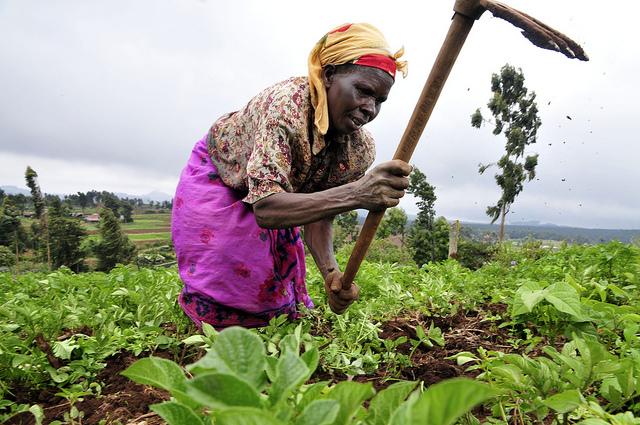Ahead of the 2019 International Women’s Day on March 8, themed “Think equal, build smart, innovate for change”, everyone should acknowledge the benefits that women bring to climate action so that climate change can be properly addressed. Climate change impacts people differently – in terms of socioeconomic circumstances, disabilities, age and gender.

When solutions to climate change address these different realities, they are more effective and their impact ripples through society. Here are five reasons why climate action and women should be seen holistically.
100% of the population needs to be involved
About 51% of humanity is comprised of women and girls. To meet the most ambitious 1.5C target of the Paris Climate Change Agreement and to limit warming to well below 2C, it is critical that the needs, perspectives, and ideas of women, as well as of men, are included in climate action so as to create just, effective, and sustainable solutions.
Furthermore, indigenous women have experienced the impacts of climate change for generations and have been forerunners and leaders in environmental conservation. Their knowledge and expertise contribute greatly to building resilience to climate impacts and to cutting greenhouse gas emissions.
The traditional skills and knowledge that women have relating to natural resource management in areas such as innovation, waste and energy are effective tools in climate action strategies.
Empowering women means more effective climate solutions
Women comprise approximately 43 percent of the agricultural labor force in developing countries. When provided with the same access to resources as men, women can increase their agricultural yields by 20 to 30 percent, not only steppin gup total agricultural output in these countries by 2.5 to 4 percent but also contributing to world hunger reduction by 12 or 17 percent, according to the UN. This can positively impact climate adaptation in two ways – appropriate technology or resources contributes to more sustainable farming and conservation, and a reduction in poverty enables individuals to better adapt to changes in climate.
Investing in women and girls creates ripple effects felt throughout entire communities and countries. It was found Research shows that countries with high representation of women in parliament are more likely to ratify international environment treaties.
Women are vital to building climate resilience in communities
Communities do better in resilience and capacity building strategies when women are also involved in planning. According to the UN, women tend to share information about community wellbeing that is important for resilience and more willing to adapt to environmental changes since their family lives are impacted.
Additionally, women are usually first responders in community responses to natural disasters, leaders in disaster risk-reduction, and contribute to post recovery by addressing the early recovery needs of their families and strengthening community building.
Climate change impacts everyone, but not equally
It is well established that climate change has a greater impact on those sections of the population that are most vulnerable, whether in developed or developing countries, and exacerbates existing inequalities. Women commonly face higher risks and greater burdens from the impacts of climate change in situations of poverty and due to existing roles, responsibilities and cultural norms.
Targeted investments in gender equality and women’s empowerment yield returns in environmental conservation, poverty alleviation, social policy and achievement of the Sustainable Development Goals (SDGs). By tackling climate change with a gender lens, women’s rights are also addressed, tackling rather than exacerbating existing gender inequalities.
Countries have agreed! – work in progress under the UNFCCC
Countries have recognised the importance of involving women and men equally in UNFCCC processes and in the development and implementation of national climate policies that are gender-responsive by establishing a dedicated agenda item under the Convention addressing issues of gender and climate change. This includes the first ever UNFCCC Gender Action Plan established under the Lima Work programme on gender (LWPG) that has five priority areas:
- Capacity-building, knowledge sharing and communication;
- Enhancing the understanding and expertise of stakeholders on the systematic integration of gender considerations … in the thematic areas under the Convention and the Paris Agreement and in policies, programmes and projects on the ground;
- Gender balance, participation and women’s leadership (To achieve and sustain the full, equal and meaningful participation of women in the UNFCCC process);
- Coherence (in UNFCCC, across UN) (To strengthen the integration of gender considerations within the work of UNFCCC bodies, the secretariat and other United Nation entities and stakeholders towards the consistent implementation of gender-related mandates and activities);
- Gender-responsive implementation and means of implementation (To ensure the respect, promotion and consideration of gender equality and the empowerment of women in the implementation of the Convention and the Paris Agreement);
- Monitoring and reporting (To improve tracking in relation to the implementation of and reporting on gender-related mandates under the UNFCCC).
